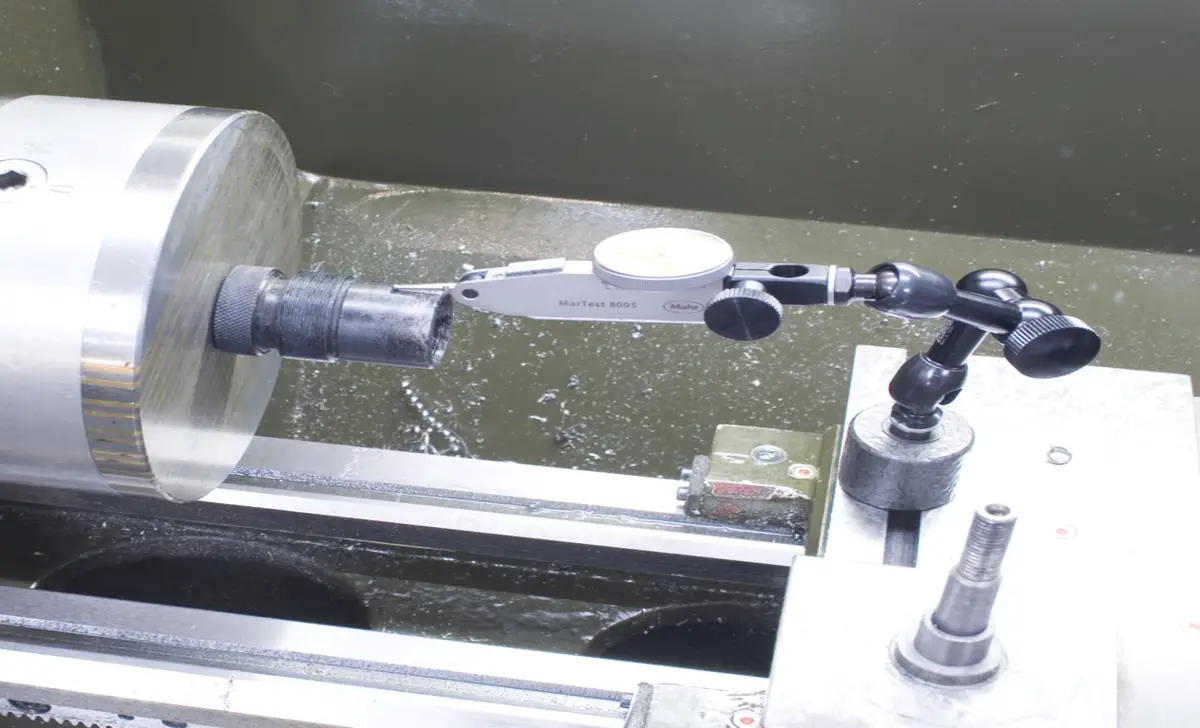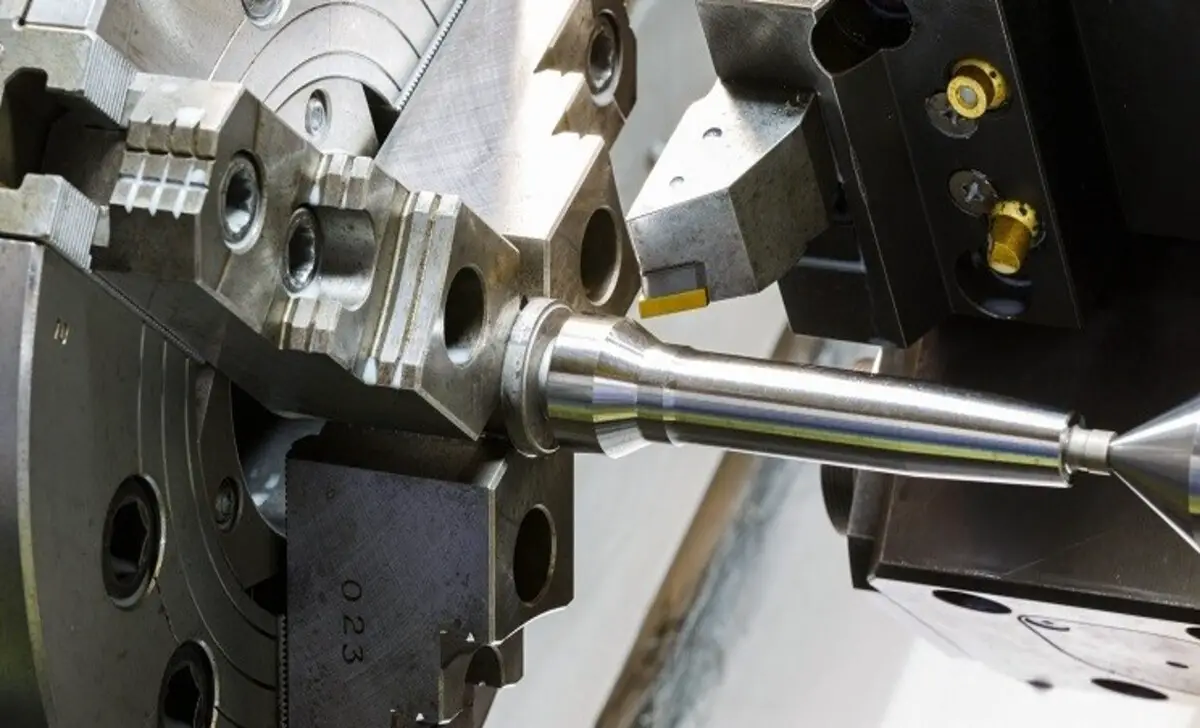Lathe machines are one of the most versatile and commonly used tools in the manufacturing industry. They can perform various operations, making them an essential machine shop component.
One crucial aspect of operating a lathe machine is setting up the cutting tool. The cutting tool removes material from the workpiece, and its proper setup is crucial for achieving accurate and precise results. However, setting up a cutting tool may seem daunting for beginners or those unfamiliar with lathe machines.
Here, we will guide you through the step-by-step process of setting up a lathe-cutting tool, from choosing the right tool for the job to adjusting its position and angle. With a professional tone, we aim to provide you with the knowledge and skills necessary to operate a lathe machine and produce high-quality workpieces.

Types Of Lathe Cutting Tools
There are several types of lathe-cutting tools commonly used in machining processes. These tools are essential for shaping and cutting different materials on a lathe machine. These tools remove material from the workpiece and create cylindrical shapes. Boring tools are handy for enlarging existing holes or creating internal cylindrical shapes.
Parting tools are handy for cutting off the workpiece from the main stock. These tools are handy to create threads on the workpiece. Grooving tools are handy to create grooves or recesses on the workpiece. Knurling tools create a decorative or functional pattern on the workpiece’s surface. Some common types of lathe-cutting tools include:
- Turning Tools
- Boring Tools
- Parting Tools
- Thread Cutting Tools
- Grooving Tools
- Knurling Tools
7 Steps On How To Set Up A Lathe Cutting Tool

Now that we understand the different types of lathe-cutting tools let’s set up the cutting tool on the lathe machine. One cannot overlook the importance of the lathe-cutting tool.
A lathe-cutting tool is a vital component in the metalworking industry, allowing the shaping, turning, and cutting of various materials with utmost accuracy. These tools are designed to withstand high-speed rotations and heavy-duty operations, ensuring consistent and reliable performance. By following these steps:
Step 1:Get The Right Tool
To set up a lathe-cutting tool, the first step is to ensure you have the right tool for the job. The type of cutting tool you will need will depend on the material you are working with and the specific task you want to accomplish. Several types of lathe-cutting tools are available, including turning, parting, and threading tools.
Choosing a cutting tool appropriate for your project is important to achieve the desired results. Once you have selected the right tool, you can move on to the next step in setting up your lathe-cutting tool.
Step 2:Chuck Your Part

Once you have selected the appropriate lathe-cutting tool for your project, the next step is to chuck your part securely in the lathe. This ensures that your part remains stable and centred during the cutting process. To do this, start by selecting an appropriately sized chuck and placing it on the lathe spindle.
Next, insert your part into the chuck and tighten it using a wrench or chuck key. Make sure to tighten the chuck evenly and securely to prevent any movement or slippage while cutting. Once your part is securely chucked, you are ready to move on to the next step in setting up your lathe-cutting tool.
Step 3:Load Cuter Tool
Ensure the lathe is switched off before loading the cutting tool to ensure safety during setup. It’s crucial to select the appropriate cutting tool that matches the specific requirements of the turning operation. Once chosen, securely place the cutting tool in the tool post and make necessary adjustments to its height and angle to achieve the right angles for the facing cut.
Tighten any screws or bolts to ensure the cutting tool is well-secured before the next step. Double-check the position of the cutting tool to guarantee a false setup isn’t in place before powering on the lathe.
Step 4:Set Ruller In Position

Before setting the ruler, turn off the lathe and securely place the cutting tool. Choose the appropriate ruler for the project and place it on the lathe bed, aligning it with the cutting tool to ensure the measurement lines up. Secure the ruler in place using the provided locking mechanism and double-check the alignment before initiating the cutting process.
Step 5:Reading The Ruler
Carefully interpreting the ruler or scale provides precise measurements for determining cutting depth during a turning operation. This accuracy is crucial for achieving the desired dimensions on the workpiece. Utilizing the ruler to monitor the lathe cutting tool’s position is essential for maintaining consistent cutting depth, ensuring uniformity across the workpiece.
Regularly checking the ruler during turning is imperative to confirm that the lathe cutting tool remains at the desired depth throughout the operation, preventing deviations. Accurately interpreting the ruler markings allows for exact adjustments to the cutting tool position, guaranteeing the precision of the turning process. Relocating the ruler perpendicularly to the lathe axis is instrumental in determining the cutting tool’s lateral position, ensuring it is aligned at right angles to the end of the workpiece.
Step 6:Take The First Test Cut

Assemble the necessary materials and tools before proceeding. Ready the lathe and cutting tool for the turning operation. Make sure to adjust the height and angle of the cutting tool for a precise cut. Position the workpiece at the end of the workpiece and lock it in place using the locking nut. Start turning the lathe slowly and move the cutting tool towards the workpiece at right angles. Lastly, take the first test cut using a light-facing cut to guarantee proper alignment and cutting depth.
Step 7:Final Adjustments
Ensuring the cutting tool’s secure fastening in the tool holder is crucial. It’s essential to correctly adjust the tool’s height and angle for the workpiece, ensuring proper alignment. Before commencing the turning operation, testing the cutting tool on a scrap piece of material to ensure precise cutting and making necessary adjustments is important.
Maintaining And Sharpening Lathe Cutting Tools

The lathe-cutting tool is typically made from high-quality materials such as hardened steel or carbide. This ensures its durability and resistance to wear and tear, even when subjected to demanding machining processes. The tool’s cutting edge is meticulously crafted to provide a sharp and precise cutting action, enabling the creation of intricate shapes and contours. Here are Maintaining and Sharpening Lathe Cutting Tools:
- Regularly inspect lathe-cutting tools for signs of wear or damage
- Use a bench grinder to sharpen dull cutting edges
- Follow proper grinding techniques to maintain the correct angles and profiles.
- Use a honing stone or diamond file to remove any burrs or imperfections after grinding.
- Store cutting tools in a designated area to prevent damage or loss
- Keep cutting tools clean and free from debris to ensure optimal performance
- Replace any cutting tools that are beyond repair or have become ineffective
Troubleshooting Common Issues With Lathe Cutting Tools
One of the key advantages of the lathe-cutting tool is its versatility. It can be used for a wide range of applications, including but not limited to turning, facing, threading, and grooving. This versatility makes it an indispensable tool in the automotive, aerospace, and manufacturing industries.
Moreover, the lathe cutting tool is designed to provide optimal chip control. This is crucial for maintaining a clean and efficient cutting process, as proper chip evacuation prevents tool damage and ensures a smooth surface finish. Here are Troubleshooting Common Issues with Lathe Cutting Tools:
- Dull Cutting Tools: Check the sharpness of the tools and replace them if necessary.
- Improper Tool Alignment: Ensure the cutting tool is aligned correctly with the workpiece.
- Incorrect Cutting Speed: Adjust the cutting speed to match the cut material.
- Insufficient Cutting Fluid: Use adequate fluid to prevent overheating and improve tool life.
- Excessive Feed Rate: Reduce the feed rate to prevent tool breakage and improve cutting performance.
- Improper Tool Selection: Choose the appropriate cutting tool for the specific material and operation.
- Chattering Or Vibrations: Check for loose tooling, worn bearings, or improper machine setup.
- Inaccurate Tool Height Or Angle: Verify that the tool height and angle are properly set for precise cutting.
Conclusion
Setting up a lathe-cutting tool requires attention to detail and precision. Following a step-by-step process, you can ensure that your lathe-cutting tool is set up correctly for optimal results. Start by selecting the right tool for the job and securely chucking your part. Load the cutter tool and set the ruler in position, carefully reading the measurements.
Take a test cut and make any necessary adjustments for the final setup. Maintaining and sharpening your lathe-cutting tools regularly is also important to extend their lifespan. If you encounter any issues, refer to our troubleshooting guide. You can achieve accurate and efficient lathe-cutting operations with the proper setup and maintenance.
Frequently Asked Questions
1.How Should The Cutting Tool Be Set For Facing?
Ans: To set the cutting tool for facing, ensure it is perpendicular to the lathe bed and at the centre height of the workpiece. Adjust the depth of cut as needed and securely clamp and align the tool before starting machining.
2.What Is The Correct Angle For A Lathe-Cutting Tool?
Ans: The correct angle for a lathe-cutting tool depends on the material and tool type. A recommended angle of 60 degrees works for most materials, but softer materials may require a sharper angle, while harder ones may need a more obtuse angle.
3.How Do You Position A Lathe-Cutting Tool?
Ans: To position a lathe cutting tool, ensure it is at the right height and angle for the job. Use a tool holder or clamp to secure it in place. Adjust the tool post or compound rest as needed. Test the position on scrap material before starting your project.
4.How Do You Set Up A Cutting Tool For Machining?
Ans: To set up a cutting tool for machining, start by selecting the appropriate tool based on the machined material. Securely mount the tool in the lathe’s holder and adjust the height and angle using the tool post and compound rest.
5.How Does The Lathe Machine Work?
Ans: A lathe machine rotates the workpiece while a cutting tool removes material. Moving the tool in various directions and angles can create different shapes and cuts.
